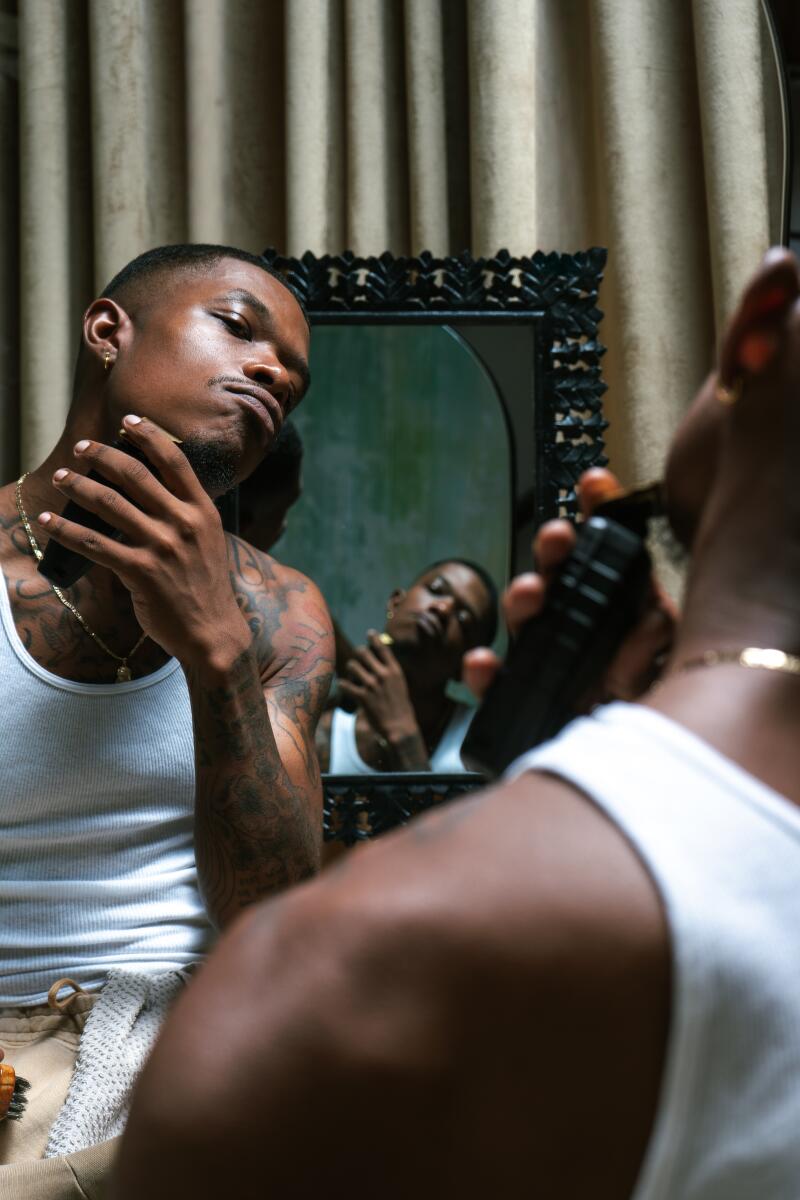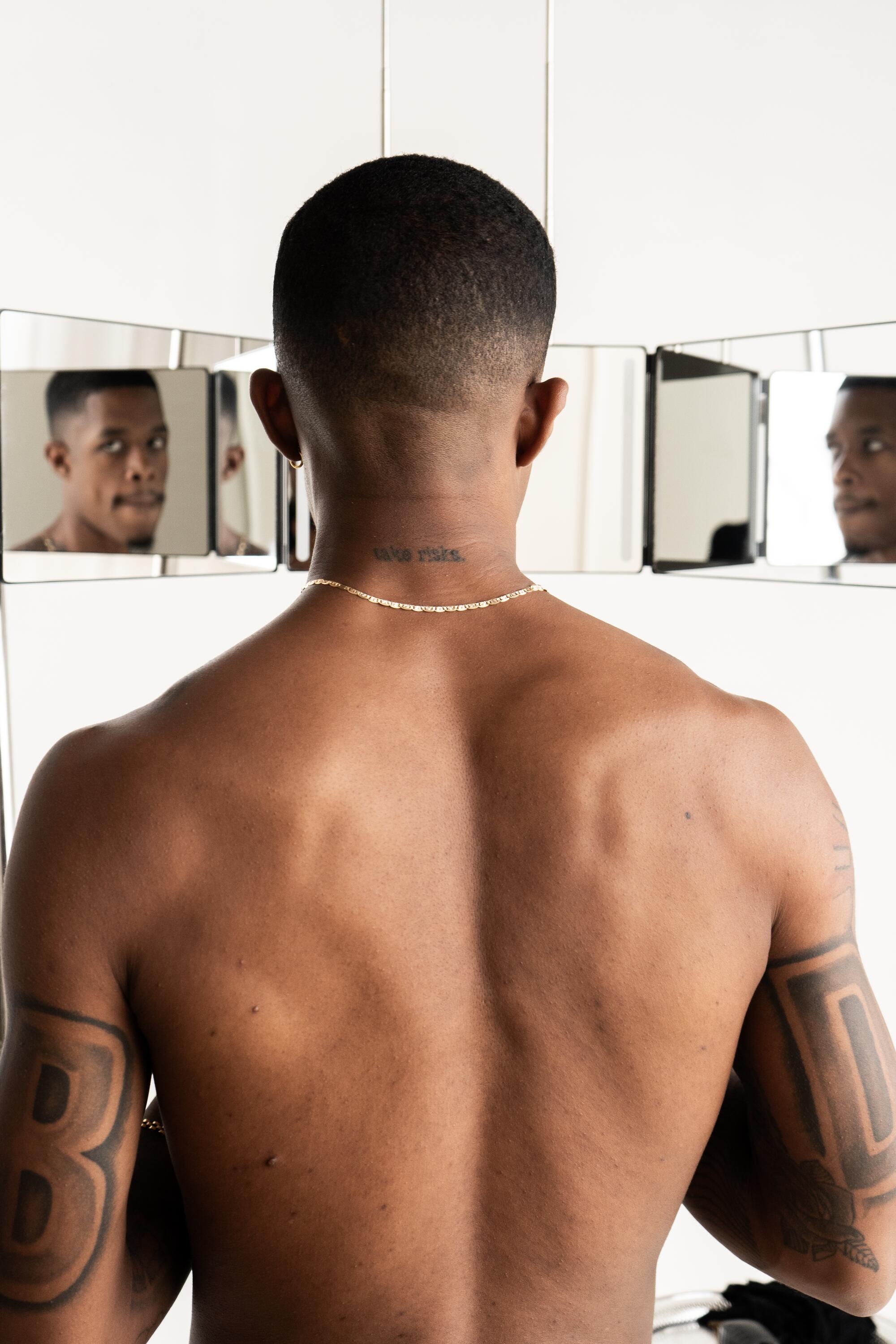Lifestyle
A housemaid is suspected of killing a child in 'Clean,' a novel about class and power

A woman named Estela García sits alone in an interrogation cell and begins talking to the police she assumes are listening in from another room. She’s 40 years old, born to a single mother in the Chilean countryside.
Seven years earlier, Estela traveled to the city of Santiago in search of work and was hired by a wealthy couple to be their “housemaid” and nanny to their soon-to-be born daughter, Julia. That daughter, now 7, has just been found dead in the family’s swimming pool. Whether the cause of her death will be deemed an accident, suicide, or foul play we don’t know; but, if it’s the latter, Estela is the chief suspect.
We readers learn almost all of this information in the first pages of Clean, a slim, extraordinary novel by Chilean author, Alia Trabucco Zerán, translated into English by Sophie Hughes. But, here’s something we never learn: what Estela looks like.
I’ve sat still in Estela’s company for hours, raptly reading her story and hearing her voice; yet, it wasn’t until I began describing the premise of this novel that I realized I have no idea of Estela’s appearance beyond the general categories of gender and age.

Through the brilliance of her writing, Zerán lulls readers into the same haughty blindness as Estela’s employers. To the señor, a doctor, and the señora, who works for some kind of corporation, invisible Estela simply is what she does for them: “making the bed, airing the rooms, scrubbing the vomit out of the rug,” cooking and serving their meals; bleaching the sweat and dirt out of their clothes; and attending to their surly child, who, even as a baby, had to be coaxed to eat.
In its narrative structure Clean may sound like a suspense story, but it’s really a memoir-in-miniature narrated by Estela — a sharp woman who’s had to funnel her life into the rooms of her employers’ house. “Claustrophobia” would have been a good alternative title for this novel, which is set almost exclusively in interior spaces.
Why stay inside with Estela, you may ask? The answer is her voice. Listen to this passage, where Estela in her cell answers the question she assumes is on the minds of her unseen inquisitors, as well as us readers:
By now you’re probably wondering why I stayed. … My answer is the following: Why do you stay in your jobs? In your poky offices, in the factories and the shops on the other side of this wall?
I never stopped believing I would leave that house, but routine is treacherous; the repetition of the same rituals — open your eyes, close them, chew, swallow, brush your hair, brush your teeth — each one an attempt to gain mastery over time. A month, a week, the length and breadth of a life.
There are so many sentences in this closely-observed novel where an image or comment suddenly swerves matters from the mundane to the revelatory: For instance, when Estela, in answer to an ad, first shows up at her employers’ address, the señora, then pregnant, looks her “up and down,” while the señor doesn’t even make eye contact: “He was texting on his phone [Estela recalls] and, without even glancing up, pointed at the kitchen door.”
When Julia, as a 2-year-old, begins to bite her nails so compulsively her cuticles bleed, Estela comments:
I kept thinking about the girl, … about her chubby, idle hands, always ready to pop those nails into her mouth, for them to be destroyed by her teeth. I never bit my nails. My mama didn’t either. I suppose for that you’d need to have your hands free.
Through the years, tensions within and beyond the house escalate as protests against income inequality rock the city. Even Estela’s own behavior becomes less tamped down. For instance, she illicitly cares for a street dog in the laundry room of the house — an assertion of autonomy that, in a roundabout way, leads to that prison cell.
Clean is an intense novel about class and power and the kind of deep down rot that lingers, despite the most vigorous scrubbing.

Lifestyle
L.A. beauty rituals: For Barrington Darius, cutting hair is math, it’s theory and it’s art

A skin, hair or makeup routine is never just a skin, hair or makeup routine. We dived deep into the beauty rituals of artists and aestheticians across L.A., and in turn learned more about their relationships to themselves and the world around them. A beauty ritual is as much personal as it is a portal: to better versions of ourselves, to better versions of the future. For Barrington Darius, a creative director, photographer, director and model, beauty is found in freedom, and freedom is found in practice, specifically a hair-cutting practice Darius has been perfecting for the last few years. As Darius says, cutting hair is math, it’s theory and it’s art. “When I cut my hair, I feel like that aura has been turned up. Aura points going up … My conversations are sharp. My thoughts are married to confidence. I speak directly.”
Cutting my hair is something I do in private. As an artist, I feel like I’m always kind of anxious about sharing. I do what I think are some magical things privately, but while some people share their magic — I use it for inspiration, for reference. I might be transitioning into that space where I share more. I have “take risk” tattooed on the back of my neck.


“When I cut my hair, I feel like that aura has been turned up. Aura points going up. It’s like, ‘I’m back.’ My conversations are sharp. My thoughts are married to confidence. I speak directly.”
— Barrington Darius
I think our haircut is our crown, so deciding to tinker with my crown at my own leisure, it’s liberating. As a creative director, filmmaker, photographer and everything else, I decide to follow off spirit — there’s never a right or wrong way. All that theory that goes into the photos, the films, the music, it’s literally the same exact thing with the practice of cutting hair. Cutting hair is math and also assessing — assessing the bones of what it’s about to be before you actually go into sculpting. You see some people’s heads and the hair that they have and it’s like, “You’re supposed to have that hair. It just fits.” I feel like I’m the fade. I’m the same every time, but I’m sharp. Every little corner that no one else thinks about, that sticks out most to me. With haircuts, there’s no Photoshop, so you have to be on point. When I cut my hair, I feel like that aura has been turned up. Aura points going up. It’s like, “I’m back.” My conversations are sharp. My thoughts are married to confidence. I speak directly. I hate to hurt people’s hearts but I do use soap and water as my skincare. My grandfather used Irish Spring, I use Irish Spring. It’s just something about that Black skin.
I plan everything. For so many years of my life, I’ve had this kind of linear vision — checkpoint to checkpoint to checkpoint. But as life introduces new realms, and everything gets shifted, your rituals change. But it’s been the same thing forever. I get up at 5 a.m. I just like the blue — I like when the blue comes up in the morning. I can sit there and see the gradient of no sun to sun and it just changes everything. I get up early, I download early, praise early. How I get up, how I include myself in the day, that’s my ritual.

I think I watched too much Spike Lee too early. “Mo’ Better Blues,” Spike Lee’s installment with Denzel [Washington], shaped my idea of beauty. I love jazz music. When you watch the film, you’ll see how selfish the Denzel character is in his space, even how he allots himself an hour of practice, no distractions, every day. I saw beauty in action. To be an example is leadership. If you move like you’re beautiful, people really just start believing you’re beautiful. I’m starting to look in the mirror like, “Wow, we are amazing human beings. We can learn to do things with our hands that we didn’t think we could do.” When I’m cutting my hair, I feel like I’m doing something real. Any practice makes you feel liberated.

Barrington wears Carhartt Wip Pants customized by the artist.
Prop styling: Synthea Gonzales
Production: Mere Studios

Lifestyle
Mitzi Gaynor, star of the big-screen musical ‘South Pacific,’ dies at 93

Actress Mitzi Gaynor poses in her apartment in Beverly Hills, Calif., on May 26, 2021. Gaynor, among the last survivors of the so-called golden age of the Hollywood musical, died of natural causes in Los Angeles on Thursday. She was 93.
Mark J. Terrill/AP
hide caption
toggle caption
Mark J. Terrill/AP
LOS ANGELES — Mitzi Gaynor, the effervescent dancer and actor who starred as Nellie Forbush in the 1958 film of “South Pacific” and appeared in other musicals with Bing Crosby, Frank Sinatra and Gene Kelly, has died. She was 93.
Gaynor, among the last survivors of the so-called golden age of the Hollywood musical, died of natural causes in Los Angeles on Thursday morning, her long-time managers Rene Reyes and Shane Rosamonda confirmed in a statement to The Associated Press.
“As we celebrate her legacy, we offer our thanks to her friends and fans and the countless audiences she entertained throughout her long life,” Reyes and Rosamonda said in a joint statement. “Your love, support and appreciation meant so very much to her and was a sustaining gift in her life.”
Her entertainment career spanned eight decades across film, television and the stage, and appeared in several notable films including “We’re Not Married!” and “There’s No Business Like Show Business,” but she is best remembered for her turn in “South Pacific.”
The screen version of “South Pacific” received three Academy Award nominations and won for best sound, while Gaynor was a best actress nominee for a Golden Globe.
The role of the love-sick nurse Nellie, created on Broadway by Mary Martin, had been eagerly sought by Hollywood stars. Sinatra helped Gaynor land it.
She was starring with him in “The Joker Is Wild,” when she had a one-day opportunity to audition for lyricist Oscar Hammerstein II. It was the same day she was scheduled for her biggest scene with Sinatra. When she explained her plight, he told her, “Don’t worry, I’ll change the schedule.”

Hammerstein was impressed with Gaynor, who had already won the approval of director Josh Logan and composer Richard Rodgers. She was cast opposite Rossano Brazzi, about whom she sang “I’m in Love with a Wonderful Guy.”
Gaynor’s career spanned film, television and Vegas
“South Pacific” was not the turning point in her career that Gaynor had hoped it would be, and she shifted her focus from film to television, making early appearances on Donald O’Connor’s variety series “Here Comes Donald,” and on CBS’ “The Jack Benny Hour.” In October of 1959, she was the only women to guest star alongside Sinatra, Crosby, Dean Martin and Jimmy Durante on ABC’s “The Frank Sinatra Timex Show” special.
Later in her career, Gaynor reinvented herself as a performing entertainer. Working with her husband and manager Jack Bean, she starred in her own musical revue that was a big draw in theaters throughout the U.S., Canada, the U.K. and Australia.
She became the highest paid female entertainer in Las Vegas and was the first woman to be awarded the Las Vegas governor’s trophy for “Star Entertainer of the Year” in 1970.
When touring with a full orchestra, a corps of dancers and backstage personnel became too unwieldy and expensive, Gaynor slimmed down the production, eventually making it a one-woman show. They continued touring every year until 2002 when Bean’s illness required a hiatus.
“I love touring; I’ve been doing it much of my life,” Gaynor said in a 2003 interview. “We go back to the same places; it’s like visiting friends. After the show, people come backstage to the dressing room, and we renew friendships. We send out almost 3,000 Christmas cards every year.”
“Off stage, she was a vibrant and extraordinary woman, a caring and loyal friend, and a warm, gracious, very funny and altogether glorious human being. And she could cook, too!” the statement from Rosamonda and Reyes said, referencing a song from the musical “On the Town” that Gaynor sang in one of her revue shows.
Gaynor also starred in several television variety specials, including “Mitzi…Zings Into Springs” and “Mitzi…Roarin’ in the 20’s.” Many of the specials received nominations for Emmy Awards, with wins for choreography, lighting, art design and costume design, the last of which was awarded to Gaynor’s longtime collaborator, Bob Mackie. The specials were the subject of the 2008 documentary “Mitzi Gaynor: Razzle Dazzle! The Special Years.”
She began singing and dancing at a young age
Born Francesca Marlene de Czanyi von Gerber (Mitzi is diminutive for Marlene) in Chicago on Sept. 4, 1931, she was a part of a musically inclined family and started singing and dancing at a young age.

In a 2003 AP interview, Gaynor said she has a clear memory of her stage debut. She had been taking ballet and tap lessons and at age 7 she was scheduled for a tap routine at the dance school recital. She had neglected to use the bathroom, and when she faced the audience, a puddle formed on the stage.
“I ran kicking and screaming off the stage,” she recalls. “But I got huge applause. So I dried off and put some lipstick on. After the next girl did a hula with batons and slipped on the wet floor, I went out and said, ‘I’m OK now. Can I do it?’ And I got cheers!”
Gaynor and Bean married in 1954 and in 1960 bought a spacious house in Beverly Hills that became their home until his death in 2006. They rarely appeared at Hollywood events, preferring to entertain a few close friends. The couple had no children.
Lifestyle
'Shahs of Sunset' Mike Shouhed Appears to Assault Ex-Fiancée in Shocking Video

Mike Shouhed‘s entering a diversion program after his alleged 2022 assault of his then-fiancée Paulina Ben-Cohen … and TMZ has obtained shocking video of the violent incident.
The “Shahs of Sunset” alum went to court Tuesday … where a judge ruled he must enter one year of a mental health diversion program after he was arrested in 2022 and charged with assault and battery.

A protective order for Paulina has also been issued, and Mike must not use or threaten force or violence.
Ben-Cohen filed a civil lawsuit against Shouhed earlier this year over the alleged incident … and, while she and her lawyer included screengrabs from this clip into the lawsuit, this is the first time the full video’s been seen. She says this video was also shared with law enforcement.
In the clip, you see Paulina yanking clothes off a rack in her closet when a man she says is Mike comes up behind her, grabs her by the hair, and throws her to the ground while the clothes rack falls on top of her.

He then grabs her, appearing to smother her face while she’s on the ground before seemingly trying to take her phone from her. Paulina then throws objects to chase him out of the walk-in closet.
The video then moves to a child’s playroom room where the man grabs Paulina from behind and puts his arms around her throat, appearing to choke her while throwing her around the room. Paulina responds with several slaps and punches to his face and head.

During this incident, Paulina claims Mike said he’d never leave the house and went to get a firearm … which is when she says she and their live-in nanny called the police. When they arrived Mike was arrested after cops say they saw visible marks on Paulina’s body.
According to court documents, prosecutors agreed to let Mike enter into a diversion program back in 2022 that included anger management classes, community service and a gun safety course. But, we’re told the city attorney’s office appealed some of the rulings, which is why he’s only entering the program now.
In the lawsuit, Paulina claims this was not the first time Mike had attacked her, claiming they got into another fight in 2021 over Mike allegedly texting another woman.

Paulina is suing Mike for assault and battery, intentional infliction of emotional distress and gender violence.
Mike Shouhed’s attorney, George Mgdesyan, tells TMZ… “This is not the full video. The altercation initiated in the living room. My client was trying to stop her from yelling because the kids were asleep. My client didn’t want her to smoke inside the house because there’s an autistic child there and it’s not in their best interest.”
He continued … “What’s shown in the video is my client trying to calm her down and that’s when he goes behind her and tells her not to yell. There’s way more to the video than provided and this is why my client is getting the diversion that he is.”
-

 Entertainment1 week ago
Entertainment1 week agoHold my beer can: Museum says a worker thought unique art installation was trash
-

 Entertainment1 week ago
Entertainment1 week ago'The Office' star Jenna Fischer reveals private breast cancer battle: 'I am cancer free'
-
/cdn.vox-cdn.com/uploads/chorus_asset/file/25673932/462754179_560996103109958_6880455562272353471_n.jpg)
/cdn.vox-cdn.com/uploads/chorus_asset/file/25673932/462754179_560996103109958_6880455562272353471_n.jpg) Technology6 days ago
Technology6 days agoMeta suggests AI Northern Lights pics are as good as the real thing
-

 Technology1 week ago
Technology1 week agoScammers exploit grief with fake funeral streaming on Facebook
-

 Lifestyle5 days ago
Lifestyle5 days agoIs the free speech debate dead? Plus, the devil! : It's Been a Minute
-

 Technology4 days ago
Technology4 days agoThis 3D-printed Texas hotel is shaking up the construction industry
-

 Lifestyle4 days ago
Lifestyle4 days agoHow one Afro-Colombian community honors their ancestry
-
Business2 days ago
10 million pounds of meat and poultry recalled from Trader Joe's and others in latest listeria outbreak

















